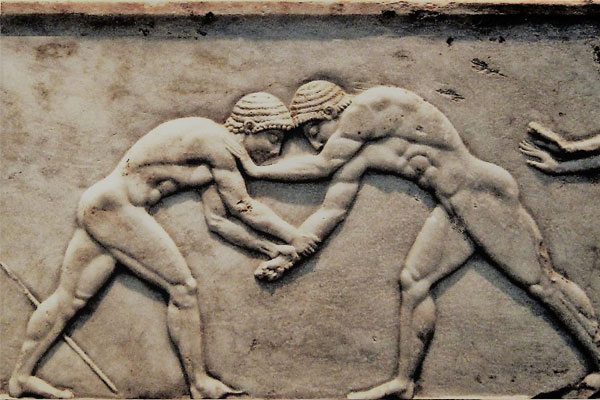Martial Arts Near Me
Pankration
Pankration, a combination of the Greek words "pan" (meaning all) and "kratos" (meaning might or power), stands tall as one of the world's oldest and most fascinating martial arts disciplines. Steeped in ancient history and intertwined with tales of valor, strength, and skill, pankration has thrived through the ages, leaving a lasting impact on combat sports. This exploration of pankration's rich tapestry will encompass its historical roots, techniques employed by its practitioners, and its current status within the world of martial arts.
To understand the origins of pankration, one must delve into ancient Greece, where this discipline first emerged. Historical records indicate that pankration dates back to the 7th century BCE, finding its place in the Olympic Games around 648 BCE. The Greeks, already celebrated for their achievements in various forms of combat sports, sought to create an all-encompassing fighting system that blended the techniques of wrestling and boxing. Pankration was born out of this desire to develop a versatile discipline that showcased the full range of human physicality and prowess.
The techniques employed in pankration were diverse and demanded a combination of strength, athleticism, and strategy. Fighters were encouraged to utilize strikes, grappling, and joint locks, making pankration an unpredictable and formidable form of combat. The absence of weight classes meant that participants needed to be well-rounded, possessing not just strength, but also agility, flexibility, and stamina. Strikes such as punches, kicks, and knee strikes were complemented by a range of grappling techniques, including throws, holds, and chokes. Pankration practitioners were truly masters of hand-to-hand combat.

However, pankration was not without rules, despite its reputation for being a no-holds-barred style of fighting. Strikes to the eyes, throat, and groin were considered illegal, and fighters were forbidden from biting or gouging their opponents. Nonetheless, matches often led to severe injuries and even deaths, as the boundaries of these rules were sometimes blurred. Pankration was a fierce and unforgiving discipline, where participants displayed both skill and bravery in equal measure.
As time passed, pankration experienced a decline following the fall of the Greek civilization. Like many ancient martial arts, pankration was nearly lost to history, only surviving as a distant memory. However, echoes of its legacy have resurfaced over the centuries in various forms and regions. Greece experienced a reawakening of interest in pankration during the late 19th and early 20th centuries, as part of a broader resurgence of the ancient Greek culture.
In the modern era, pankration has undergone a metamorphosis, adapting to the changing styles and regulations of combat sports. The International Federation of Pankration Athlima (IFPA), founded in 1997, has been instrumental in promoting the practice of pankration worldwide. Today, pankration competitions are governed by strict rules to ensure the safety of participants, with emphasis placed on controlled strikes, joint locks, and chokes. The sport has also incorporated elements from other martial arts, such as Brazilian Jiu-Jitsu and Muay Thai, to further diversify its techniques and strategies.
Pankration's current status in the world of martial arts is indicative of its enduring legacy. It has garnered a loyal following, attracting practitioners and enthusiasts from diverse backgrounds. Prominent MMA organizations, such as the Ultimate Fighting Championship (UFC), have also incorporated pankration aspects into their events, recognizing the historical significance and effectiveness of the discipline. Pankration's influence is undeniably present, with its techniques and principles permeating the broader martial arts ecosystem.
Pankration's journey through time has been marked by battles fought both inside and outside the ring. Its history, intertwined with ancient Greece, showcases the ingenuity and physical prowess of its people. The techniques employed by pankration practitioners demonstrated a fusion of strikes and grappling, creating an unpredictable and demanding discipline. Despite falling into obscurity, pankration managed to rise again and adapt to the modern era, finding a place within the global martial arts community. Today, pankration continues to capture the imagination of athletes and spectators alike, maintaining its standing as a formidable martial art and a testament to the enduring power of human physicality and skill.